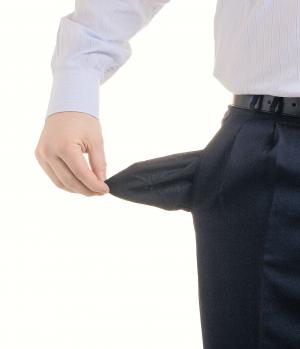
There was a time when cash was king. Credit was reserved only for businesses. People didn’t pay at the pump. And paying for products, good or services at a store was nothing like the scene is those Visa Checkcard commercials were everyone is queued up, happily paying for their products with plastic, until some thoughtless shopper pulls out a check book or has the audacity to reach for cash, causing the charge fest to come to a screeching halt.
According to Linda Tucker, Director of Education for Consumer Credit Counseling Service in North Little Rock, Arkansas, credit cards didn’t become available to the average consumer until the 1960’s. Now, credit cards are everywhere and used by practically everyone. In addition, just like many things coming out of the 60’s, the increased availability of credit cards has had a nasty backlash.
Last year, credit card consumers rung up more than 2.2 trillion in purchases and cash advances as the overall credit card debt grew by 315 percent from 1989 to 2006, according to public policy research firm Demos.
With the rise in credit-based spending also came a rise in people delinquent on their credit cards. According to CardTrack.com, the percentage of people delinquent on their credit cards is the highest it’s been in three years.
So, how can you avoid the credit card trap and keep your debt at a manageable amount? Here are a few tell-tale signs you might be over your head, according to Jeremy Vohwinkle’s article Beware of the Warning Sings of Too Much Debt.
- You don’t have any savings.
- You only make the minimum payment on your credit cards each month.
- You continue to make more purchases on your credit cards while trying to pay it off.
- You have at least one credit card that is near, at, or over its credit limit.
- You are occasionally late in making payments on bills, credit cards, or other expenses.
- You don’t even know how much total debt you actually have.
- You use cash advances from your credit cards to pay other bills.
- You bounce checks or overdraw you bank accounts.
- You’ve been denied credit
- You lie to friends or family about your spending and debt.
In addition, if you are one of the wise Americans not dealing with debt or are just now considering a credit card for the first time, here are a few things Amy L. Cooper of CardRatings.com says you should know:
- Choose wisely. Know your cards Annual Percentage Rate (APR), the interest rate that will be added monthly to any outstanding balances and see if the rates are fixed or variable. Find out what the grace period is and review all fees, especially transaction fees. Look for any other charges such as special delinquency rates. Read the fine print carefully, shop around, and compare cards.
- Establish good credit card spending habits. Think about how you use your credit card. A credit card should be a convenient means of spending money that you have readily available. It’s not a free pass to spend money that you don’t have or will be borrowing.
- Pay in full at the end of each month. This should be easy to do if you follow the first two rules.
In closing, it is important to remember that when it comes to credit cards, the banks do not care what your race, ethnicity or culture is, all they want is their money, and often at a much higher interest rate than most people would pay for a straight bank loan.
